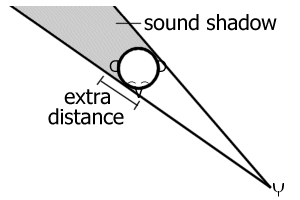
1. What information can be used to localize auditory stimuli?
2. What is the precedence effect?
3. How can the visually impaired use sound for localization and locomotion?
4. How does reverberation affect our experience of sound?
5. What are the two mechanisms responsible for auditory scene analysis?
6. Discuss the nature of absolute pitch.
7. How is music processed in the brain?
8. Describe the evidence for/against the “Mozart effect.”

• interaural _____ differences
- move _______ (horizontal direction of sound source) off to one side
- one ear falls into “sound shadow”: sounds are bent around the head, or are diffracted by the edge of the head
- intensity difference between ears used as location cue
- difference may be as large as 30 dB
- affects ______ frequencies
• interaural ____ differences
- difference in arrival times of the sound to each ear
- evidence: neurons found in auditory cortex and superior olives that respond to certain interaural time differences
- differences as small as 10 μs detected
- affects _____ frequencies
• _____ differences
- difference in phase between two waves at a point in time
e.g., two tones at 1000 Hz (1 cycle takes 1.0 ms); if arrival times differ by 0.5 ms, phase difference = 180°
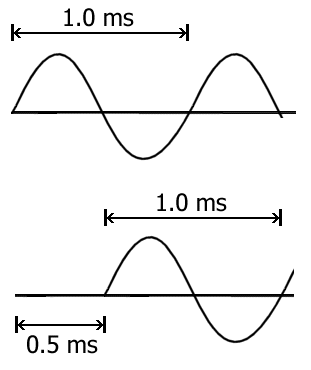
- works better for _____ frequencies
• _____:
- delays/amplifies some frequencies coming from certain directions/elevations
- may decrease intensity of some mid-range frequencies--but only if the source is behind the head
- part of the basis for “QSound®” positional 3-D sound processing algorithm?
• __________ effect
- present two identical sounds from two speakers in different locations
- at shorter delays (≤ 2 ms and for simultaneous presentation), perception is of one sound located between the two sound sources (______)
- at longer delays (35 ms), two separate sounds are perceived (____ threshold)
- if sounds are separated by a delay of 5 to 20 ms, sound is perceived to be coming from leading speaker only
- lagging sound is suppressed for reasons not well understood
- facilitates hearing in a _______ acoustic environment
• ____________
- some animals (e.g., bats) send out ultrasonic waves
- reflections off objects used to locate obstacles, prey, etc.
- is used by visually impaired people, but can be learned by anyone
Ammons, Worchel, & Dallenbach (1953):
▸ participants were blindfolded
▸ walked toward obstacles at 6, 12, 18, 24, or 30 feet
▸ with practice, they could locate and avoid the obstacles
▸ but not when wearing ________
Kellogg (1962):
▸ standard stimulus: wooden disk (12" diameter) placed 20 feet away
▸ distance of comparison disk was varied
▸ blind participants were allowed to make any _____ to determine distance of comparison
▸ differences of 2 feet were reliably made
- reflection of sound by walls, ceiling, and floor
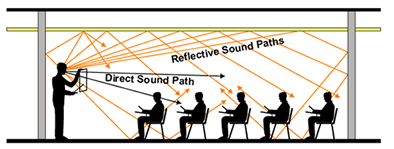
- increases duration of the sound; also aids localization
- “______” is less as sound source is approached
- for optimal aesthetics, amount of direct and indirect (_________) sound must be balanced
- ______ time: time for sound to decrease to 1/1,000th of original pressure
- too short reverb time: music sounds “dead”
- too long: music sounds “muddy”
- concert halls should have reverb time 1.5-2.0 seconds
Bolt, Beranek, and Newman, Inc. (1962):
- designed Lincoln Center’s Philharmonic Hall in NYC
- believed “________” of sound depended on initial-time-delay-gap (ITDG): reflections of sound should start to follow direct sound by no more than 20-30 ms
- surveyed 54 concert halls for reverb, loudness, and ITDG
- results: orchestra sounded harsh and unblended; bass section was almost inaudible
- called a “great big, yellow, $16,000,000 lemon”
- was ______, rebuilt and renamed Avery Fisher Hall in 1976
Why the problems?
- reflecting ceiling panels were too small and dispersed; absorbed too much low-frequency sound
- “____-___ effect”: significant deterioration of bass reverberation as sound passes over rows of seats
- to increase capacity, _______ sidewalls were built; these caused echoes and distortions
- _______ impression of music is highly dependent on reflections from sidewalls; makes you feel enveloped by an orchestra
How do we make sense out of multiple, overlapping sound sources?
Two-stage process (Bregman, 1994):
1. _________ grouping
- continuous flow of sound is analyzed into separate chunks and grouped (like _______ laws)
- important variables include intensity, temporal change, frequency change, location, timbre, etc.
- grouping occurs according to:
• similar patterns over time (________ segregation or grouping)
• similar frequency spectra (________ segregation or grouping)
- results in separate auditory _______: groups of sounds that seem to belong together
e.g., Horse vs. Morse
• sequence of sounds with a repeating pattern LHL-LHL-... (where L=low tone and H=high tone)
• when the frequency separation of the tones is small, the sequence is perceived as a single auditory stream [horse]
• at larger frequency separations, the high and low sounds form ________ streams and the rhythm is lost [morse]
2. ______-driven grouping: higher-level knowledge guides the grouping and listening processes
- attention allows a selected sound to be processed more
- sound input is analyzed for particular _______(s)
e.g., mechanic listening for an engine clinking vs. clunking
- definition: extreme accuracy (at least 90%) in identifying an isolated musical note without a reference tone--not literally “_______” pitch
- rate of occurrence is 1 in 10,000 people
- may include ability to name the key of a piece of music
- it more difficult to produce (i.e., ____) a given note than to identify a heard one
- influenced by timbre and ____ ______: similarity shared by musical tones that have the same name
- errors often are in naming the ______, not the note
- most with this ability began studying music before age 5
- may be a critical period for absolute pitch development
- may have genetic basis
Weinberger (2004):
- music evolved with _______; bone flutes, jaw harps, percussive instruments found to be over 30,000 years old
- infants as young as 2 months will turn toward consonant sounds, and away from dissonant ones
- music can activate ________ centers of the brain (e.g., like chocolate, sex, cocaine)
- music and evolution?
• Geoffrey F. Miller (2000): music enhances human survival by aiding _________
• Robin M. Dunbar (1996): music promotes social ________ in large groups
• Steven Pinker (1997): music is just “auditory __________,” a byproduct of other evolutionary adaptations
- music is not processed by the brain merely like _____
Difficulties in studying music and the brain:
• observations of patients with brain injuries are contradictory
• brain imaging studies have been incomplete
• music is complex and ________________, having melody, harmony, rhythm, and timbre
• large individual ___________ from person to person
Case study: Maurice Ravel
- in 1933, the French composer began to exhibit symptoms of focal cerebral degeneration, a disorder in which discrete areas of brain tissue atrophy
- conceptual abilities remained intact: could still hear and remember his old compositions and play scales--but could not _____ music
- speaking of his proposed opera Jeanne d’Arc, Ravel confided to a friend, “...this opera is here, in my head. I hear it, but I will never write it. It’s over. I can no longer write my music.”
- suggests that the brain does not have a specific center for _____
Altenmüller (2004): brain areas
- primary and secondary auditory cortices handle _____ stages of music perception (e.g., pitch and intensity)
- secondary auditory cortex processes more complex music patterns: harmony, melody, rhythm
- tertiary regions thought to _________ patterns into a coherent musical whole
- beyond this are association areas (e.g., Wernicke’s area)
- in general, left hemisphere processes:
▸ _________ (distance between tones) and
▸ ______ (durations of a series of notes)
- right hemisphere recognizes holistic traits including:
▸ _____ (regular beat; e.g., three-quarter time) and
▸ _______ contour (pattern of rising and falling pitches)
Weinberger & colleagues (1996): neural plasticity
- measured ______ curves of neurons in auditory cortex of neurons in guinea pigs
- paired a specific tone with mild foot _____
- found neurons that had shifted their tuning curves to the frequency of the CS tone; became stronger over time
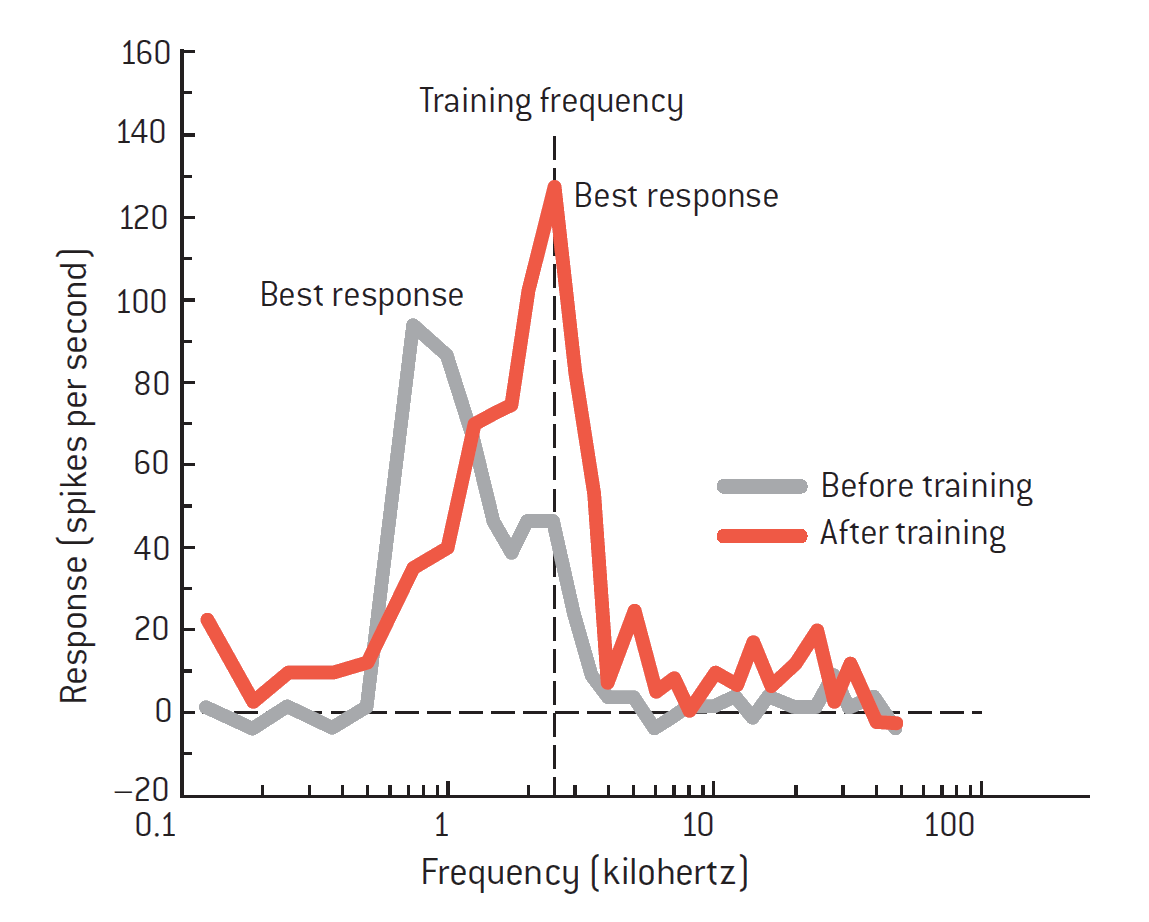
- learning can ______ the brain so that more cells respond to behaviorally important sounds
Pantev & colleagues (1998):
- musicians listened to a _____ playing
- about 25% more of their left-hemisphere auditory regions respond than in nonmusicians
- specific to musical tones; does not occur with similar nonmusical sounds
- this effect is greater, the _______ the age at which music lessons began
Halpern & Zatorre (1999): hearing and imagery
- PET-scanned brains of nonmusicians who listened to music, or ________ hearing the same piece of music

- same areas in ________ lobes activated both when listening to the melodies and imagining them
Rauscher, Shaw, & Ky (1993):
- college students tested in three conditions (10 minutes each):
• heard Mozart’s Sonata for Two Pianos in D Major (K. 448)
• listened to tape of __________ instructions designed to lower blood pressure
• _______
- Mozart group showed temporary (10-15 minute) enhancement of three abstract/spatial reasoning subtests from the Stanford-Binet Intelligence Scale
e.g., Paper Folding & Cutting (PF&C): make judgments about how pieces of paper would look after they are folded or cut along certain lines
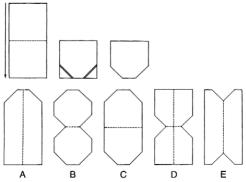
- improvement in IQ score was “equivalent” to an increase of 8 to 9 points--compared to the other two conditions
Rauscher, Shaw & colleagues (1997):
- studied three groups of preschoolers:
1) received private _____/keyboard lessons and singing lessons
2) received private ________ lessons
3) no training
- group 1 performed 34% higher on one of four tests measuring _______/temporal ability than the others; lasted at least one day
- conclusion: _____ uniquely enhances higher brain functions required for mathematics, chess, science and engineering
Don Campbell:
- ____________; author of The Mozart Effect: Tapping the Power of Music to Heal the Body, Strengthen the Mind and Unlock the Creative Spirit (1997), and The Mozart Effect for Children: Awakening Your Child’s Mind, Health, and Creativity With Music (2000)
- later trademarked the phrase “The Mozart Effect®”
- claims he made a blood clot in his brain disappear by _______ and envisioning a vibrating hand on the right side of his skull
Bangerter & Heath (2004):
- analyzed hundreds of newspaper articles from 1993-2001
- increase in media attention corresponded to publication of The Mozart Effect and The Mozart Effect for Children
- 1993 finding _________/watered down over the years
- increasing likelihood of applying TME to _______, despite a lack of evidence
- compared different U.S. states’ levels of media interest in TME with each state’s educational test scores and teacher ________
- in states with the most problematic educational systems (e.g., Georgia and Florida), newspapers gave the most coverage to TME
- why? TME likely tapped into anxiety about early childhood education
Steele, Bass, & Crook (1999):
- reviewed over a dozen subsequent studies that failed to _________ the 1993 finding
- followed protocols in original 1993 study
- found __ ______ in over 100 participants
- problems with previous research on TME:
• some have no independent control group
• TME found only for one Stanford-Binet spatial subtest
• no demographic information given (race, gender, SES may influence intelligence scores)
Pietschnig & colleagues (2010):
- performed meta-analysis (review of published studies) of 40 studies of TME, involving more than 3,000 participants
- results:
• there is nothing special about listing to Mozart’s music
• listening to music (any music) can improve ____, which may improve task performance
- why were the flawed studies of TME published at all?
- journals are biased toward publishing articles that have ________ results--that show an effect, rather than the absence of one (null results)
- conclusion: “Mozart effect--________ effect”
TME is #6 in the book 50 Great Myths of Popular Psychology (Lilienfeld, 2009)